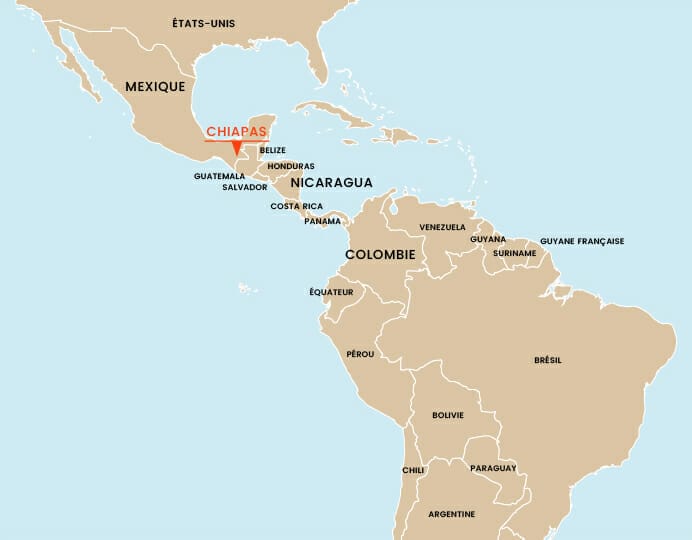
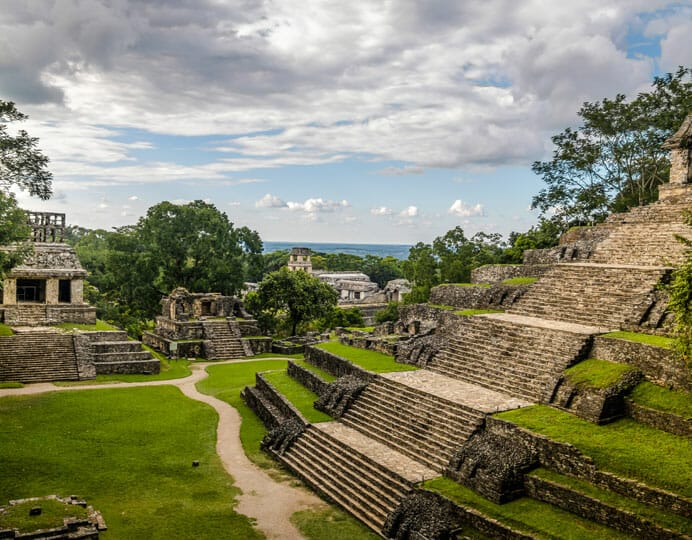
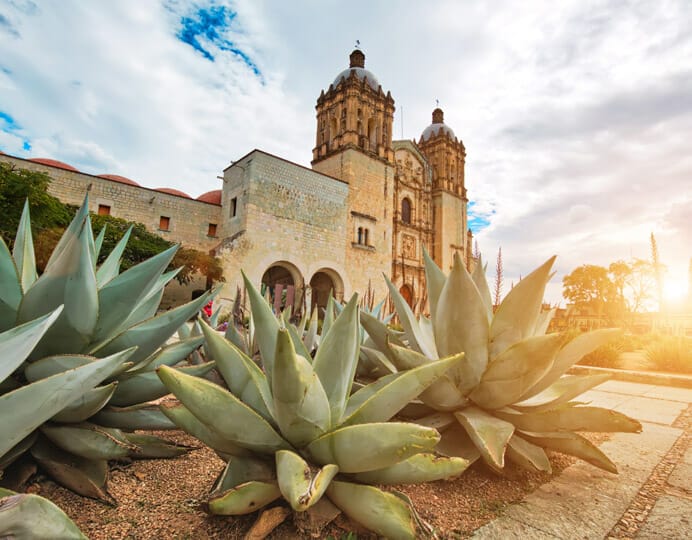
The origins of the hammock
La fabrication artisanale de hamacs mexicains
Le Mexique est célèbre pour ses hamacs mexicains en filet qui sont parmi les meilleurs au monde.
The origin of the hammock is about a thousand years old. Although it is not native to Mexico, it is believed that it could have reached the Yucatan Peninsula at least two centuries before the arrival of the Spanish. The word hammock comes from the Taíno and means "fishing net".
The first hammocks looked like a fishing net and their openings were very wide between the knots. However, it was in Mexico that new fabrics were developed and began to be invented until the hammock was found, consisting of intertwined threads that stretch or tighten at will.
Today, in Mexico, and more specifically in the state of Yucatan, almost all Mexicans have a hammock in their house. This tradition even leads them to incorporate hooks when building the walls of their homes.
Our Hammocks made in Chiapas
More than 4000 years ago, the Tzotzil-Tzeltal, (people of Mayan origin) were already living in Central America. Around the year 2000 B.C., these first aborigines crossed the Bering Strait to settle in Chiapas. This population, who lived essentially from fishing and gathering, came to form the Maya zone.
Adjacent to Guatemala, Chiapas is a region that is half tropical and half mountainous. Here, more than 20% of the population is of Amerindian origin, mostly descended from the Maya. Chiapas is one of the richest states in the country in terms of indigenous culture.
Chiapas' handicrafts range from intricate pottery pieces to beautiful textiles. For each one, the artisans capture the history and culture of their ancestors and indigenous peoples.
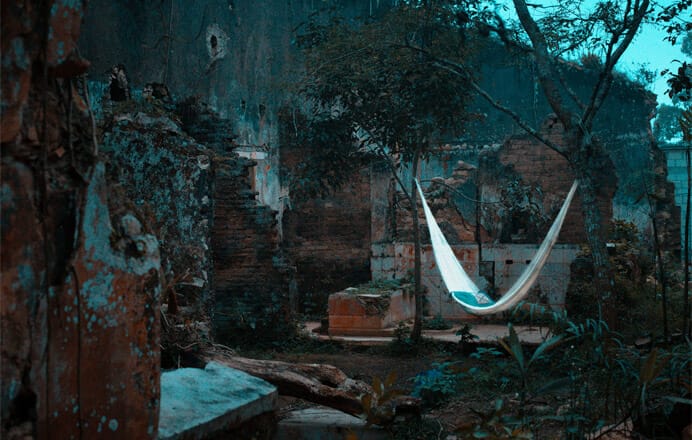
The Hammock Tradition in Mexico
The Mexican know-how
 The best hammocks are hand wovenThe work is done with a frame and a needle carved from solid wood or bone, which allows each thread to be crossed. The work can take up to two weeks.
The best hammocks are hand wovenThe work is done with a frame and a needle carved from solid wood or bone, which allows each thread to be crossed. The work can take up to two weeks.
Il faut savoir qu’un Hamac Mexicain est unique car il dépend des points de suture réalisés par chaque artisan. A noter que les outils de base, tels que le cadre et les aiguilles sont très souvent produits localement et sont nécessaires à fabrication artisanale de hamacs mexicains.
Ce qui se démarque, c’est la capacité à combiner harmonieusement les couleurs et les nuances des broderies faites à la main. La majorité des motifs reste tout de même étroitement liée aux traditions mayas et chrétiennes. Et l’arrivée des Espagnols n’y est pas pour rien…
Transmission of know-how
 This skill is acquired mainly through inherited learning from generations and self-taught
This skill is acquired mainly through inherited learning from generations and self-taught
Taught by grandmothers and mothersThe instruction begins in childhood with simple stitches. After the housework, women sit down "to rest" and then start embroidering.
It is on these occasions that they pass on taste and skill to the young girls. At first to elaborate simple products, which will be intended for local use. Then, thanks to the experience acquired over the years, the creations will be more and more complex with various and varied designs. The Maya Alebrije hammock available in our collection is a good example: See this hammock
Income for families
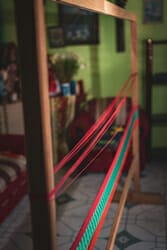 As in many Latin American countries, working from home au Mexique est l’une des formes traditionnelles de production textile. La fabrication artisanale de hamacs mexicains constitue actuellement an important source of revenue in many localities of the distant municipalities of the capital, like Chiapas. They are often a way for these artisans to access a complementary monetary income.
As in many Latin American countries, working from home au Mexique est l’une des formes traditionnelles de production textile. La fabrication artisanale de hamacs mexicains constitue actuellement an important source of revenue in many localities of the distant municipalities of the capital, like Chiapas. They are often a way for these artisans to access a complementary monetary income.
Un article très complet sur les différentes formes d’artisanat au Mexique : l’artisanat au Mexique
Cotton and nylon hammock
 Cotton hammocks (70% cotton for the bed and 30% nylon for the arms) are perfect for use in interior and are usually available in a creamy shade or soft, pale colors. However, cotton can stretch and warp. Some Mexicans find it too hot for summer use.
Cotton hammocks (70% cotton for the bed and 30% nylon for the arms) are perfect for use in interior and are usually available in a creamy shade or soft, pale colors. However, cotton can stretch and warp. Some Mexicans find it too hot for summer use.
More expensive, the 100% nylon hammocks are the most resistant and are recommended for outdoor use. Its colors are bright and very vivid. Many nylon hammocks are multi-colored and have a comfort almost identical to cotton hammocks.




